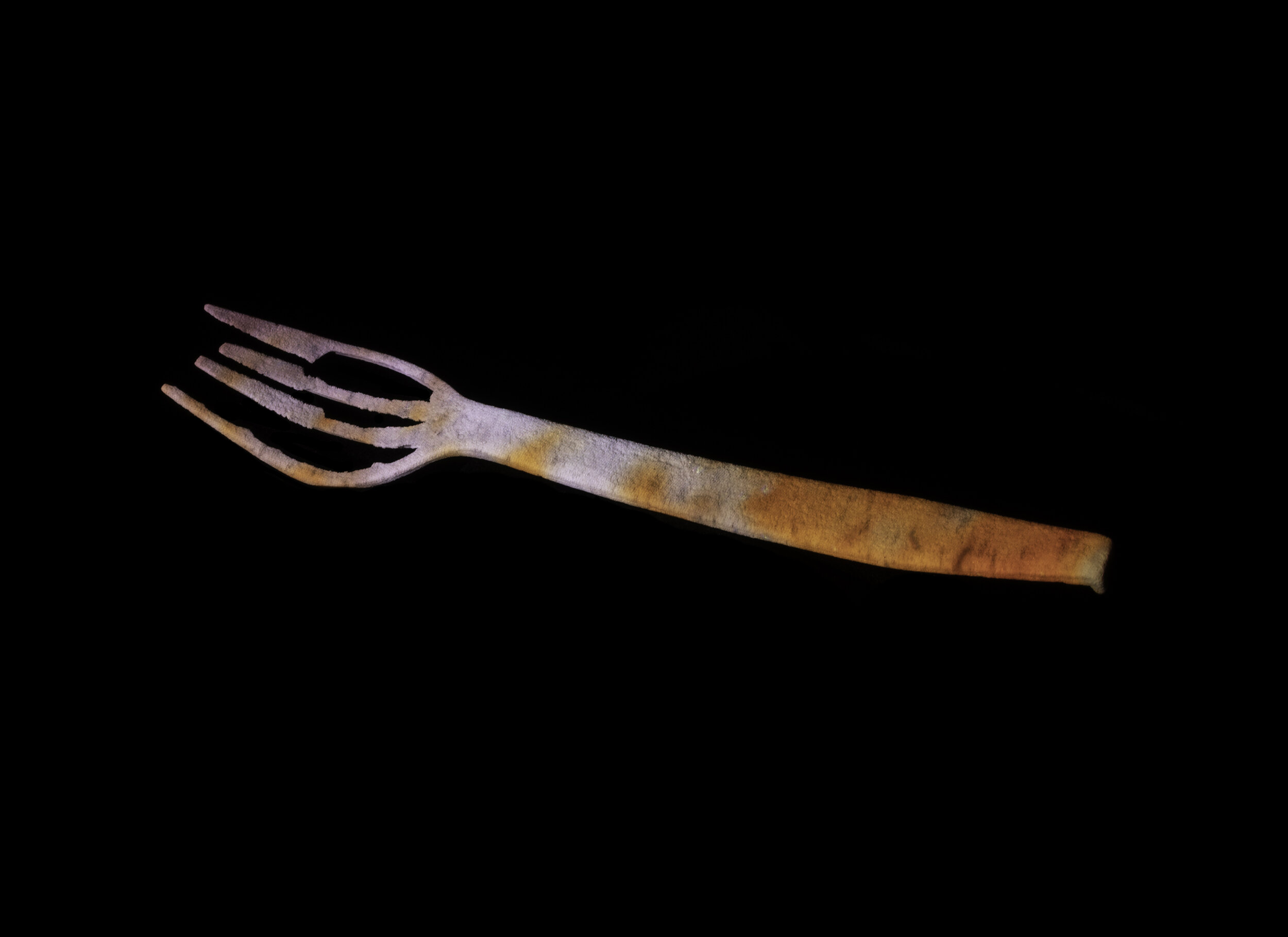LUNASEA
LUNASEA represents the amount of plastic affecting the unique environment of Henderson Island, isolated in the middle of the South Pacific Ocean. The work responds to both conflict and mimicry within the environment of this remote UNESCO world heritage site, from the accumulation of man-made plastic debris washed up on its shores.
One of only two raised coral atolls, the landscape of Henderson resembles the surface of the moon, with hundreds of plastic fishing buoys disturbing its surface, scattered like planets in a marine solar system. The recovered buoys represent ‘moons’ in a blurred orbit of moving plastic and coral dust - a unique LUNASEA.
The series represents phases of the moon which transition from 8 ‘full moons’ running through 56 eclipses and ending with 8 ‘new moons’ of coral. The new coral moons offer a glimpse of the island landscape itself - without plastic, and serve as a metaphor to the hope that Henderson will eventually return to its natural primitive state.
Moons are interrupted by individual plastic objects, such as a skating boot, a bottle, a syringe, or a toy, creating a shadow and obscuring light, in the same way plastic pollution has created a sinister shadow over the island of Henderson. These advancing shadows represent the movement of tides, and of plastic that has travelled more than 5,000km from the nearest major landmass.
The projected images in the series represent the similar grainy and indistinct images first broadcast by the Moon Landing in 1969, as seen on communal screens, or on home television sets. This event represented a stunning breakthrough in broadcasting, was one of the biggest television events in history, and went on to reach a global audience of 650 million. It is hoped in the same way this current interaction with images of plastic moons could reach a global audience, and go on to empower change.
It is intentional to mystify the viewer, making it difficult to tell which images are plastic, or coral - in the same way that plastic has the ability to mimic natural habitats and food, and which threatens the endemic species of Henderson. It is sheer LUNACY to expect that plastic will stop entering the sea, and regrettably ending up on one of the most remote, and once untouched pristine locations on earth - unless critical action is taken.
“one small step for man, one giant leap for mankind"
If the first step could be to take responsibility for the ever-increasing production of plastic, this would be one giant leap for mankind, and for the future of the planet.
(Full series - 72 moons and 56 recovered objects - all images are single exposures of between 3-5 seconds).
____________________
Scientific research:
To read about the research conducted on Henderson Island during this expedition by Dr Jenn Lavers and Dr Alex Bond, please click on the title below;
Assessing plastic size distribution and quantity on a remote island in the South Pacific
Marine Pollution Bulletin, June 2021
____________________
Recognition:
The LUNASEA series was nominated for the Leica Oskar Barnack Award 2020, and featured in VOGUE November 2021.
The Henderson Island Plastic Pollution Expedition 2019 was awarded the title of an ‘Explorers Club Flag Expedition’.
With only 3 - 5 expeditions a year recognised in this way, and with previous others having included, ironically, the Apollo 11 Space Mission, and the dive to Challenger Deep, this significant achievement which included recording data, as well as photographing marine plastic pollution has now become part of the archives, accessible to other modern day explorers and scholars.
(LUNASEA is one of three projects created as part of the Henderson Island Expedition 2019).













































































